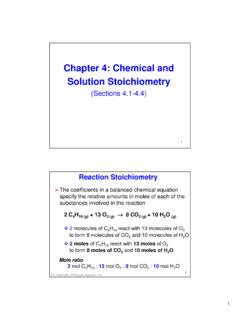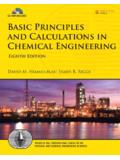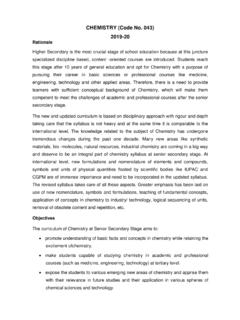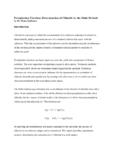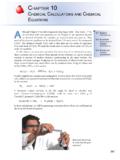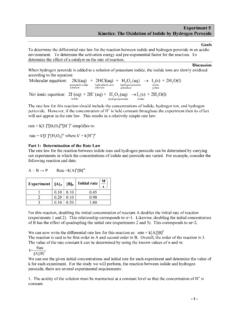Chemical Reactions And Solution Stoichiometry
Found 10 free book(s)Chapter 4: Chemical and Solution Stoichiometry
webhost.bridgew.eduStoichiometry and Chemical Reactions The most common stoichiometric problem will present you with a certain mass of a reactant and then ask the amount or mass of product that can be formed. This is called mass-to-mass stoichiometry problem 5 Predicting Amounts from Stoichiometry – Cont. 1. You cannot convert mass (g) of one substance directly to
Basic Principles and Calculations in Chemical Engineering
ptgmedia.pearsoncmg.comThe Prentice Hall International Series in the Physical and Chemical Engineering Sciences had its auspicious beginning in 1956 under the direction ... CHAPTER 5 MATERIAL BALANCES INVOLVING REACTIONS 189 5.1 Stoichiometry 190 5.2 Terminology for Reaction Systems 198 ... M SOLUTION OF SETS OF EQUATIONS 902 N FITTING FUNCTIONS TO DATA 924
Stoichiometry: Baking Soda and Vinegar Reactions
labsci.stanford.eduUsing the concept of stoichiometry, the amount of product that results from a chemical reaction can be predicted. Baking soda is a powdered chemical compound called sodium bicarbonate, and vinegar includes acetic acid. These 2 components react in solution to form carbon dioxide, water, and sodium acetate as shown in the chemical reaction below ...
Chapter 04 - Aqueous Reactions and Solution Stoichiometry
www.unf.eduMicrosoft PowerPoint - Chapter 04 - Aqueous Reactions and Solution Stoichiometry.pptx Author: spuds Created Date: 1/29/2019 1:35:31 PM ...
CHEMISTRY (Code No. 043) 2019-20 - CBSE
cbseacademic.nic.inNature of matter, laws of chemical combination, Dalton's atomic theory: concept of elements, atoms and molecules. Atomic and molecular masses, mole concept and molar mass, percentage composition, empirical and molecular formula, chemical reactions, stoichiometry and calculations based on stoichiometry.
Precipitation Titration: Determination of Chloride by the ...
academic.brooklyn.cuny.eduunknown. Then the concentration of the unknown can be calculated using the stoichiometry of the reaction and the number of moles of standard solution needed to reach the so called end point. Precipitation titrations are based upon reactions that yield ionic compounds of limited solubility. The most important precipitating reagent is silver nitrate.
Chapter 10 ChemiCal alCulations and equations
preparatorychemistry.comChapter 10 ChemiCal CalCulations and ChemiCal equations 367 10.1 Equation . Stoichiometry 10.2 Real-World . Applications of . Equation Stoichiometry 10.3 Molarity and . Equation . Stoichiometry lthough Chapter 9 was full of questions that began with, “
STOICHIOMETRY - LIMITING REAGENT
alpha.chem.umb.eduStoichiometry – Limiting Reagent Laboratory ... and the amount of products produced by a chemical reaction. The principles of stoichiometry ... This reaction goes to completion and there are no undesirable side reactions that form other products. Given this and based on your percent yields and perhaps some
Chapter 10 ChemiCal alCulations and equations
preparatorychemistry.com10.1 Equation Stoichiometry 369 The ratio of moles of P 4O 10 to moles of P (which came from the subscripts in the chemical formula, P 4O 10) provided the key conversion factor that allowed us to convert from units of phosphorus to units of tetraphosphorus decoxide. Now let’s assume that you have been transferred to the division responsible for the
Experiment 5 Kinetics: The Oxidation of Iodide by Hydrogen ...
www.kbcc.cuny.edublue solution is formed by the complex of starch–iodine. The color change is sharp, and the time elapsed to this point is determined simply by use of a timer. The time from the addition of the peroxide solution to the appearance of the blue color is ∆t for the reaction. Since the stoichiometry of the thiosulfate–iodine
